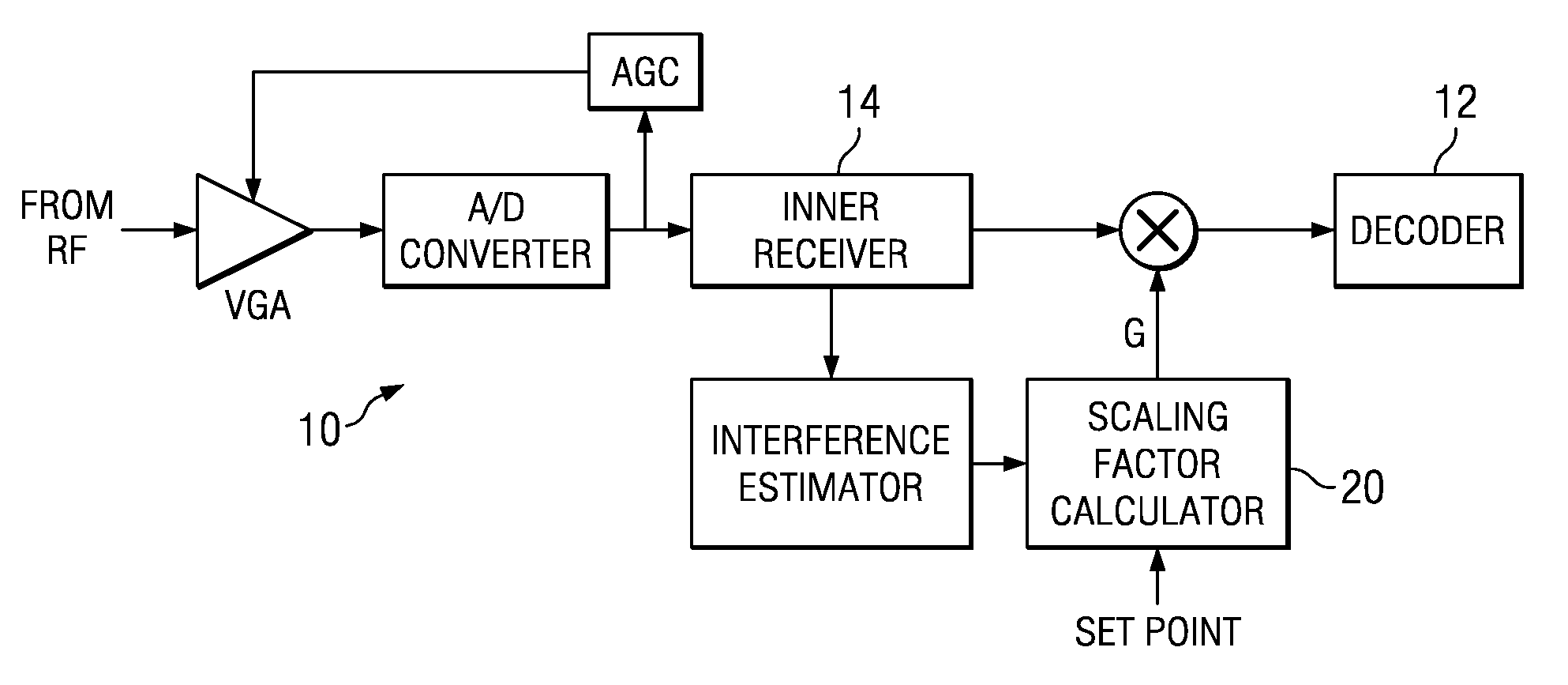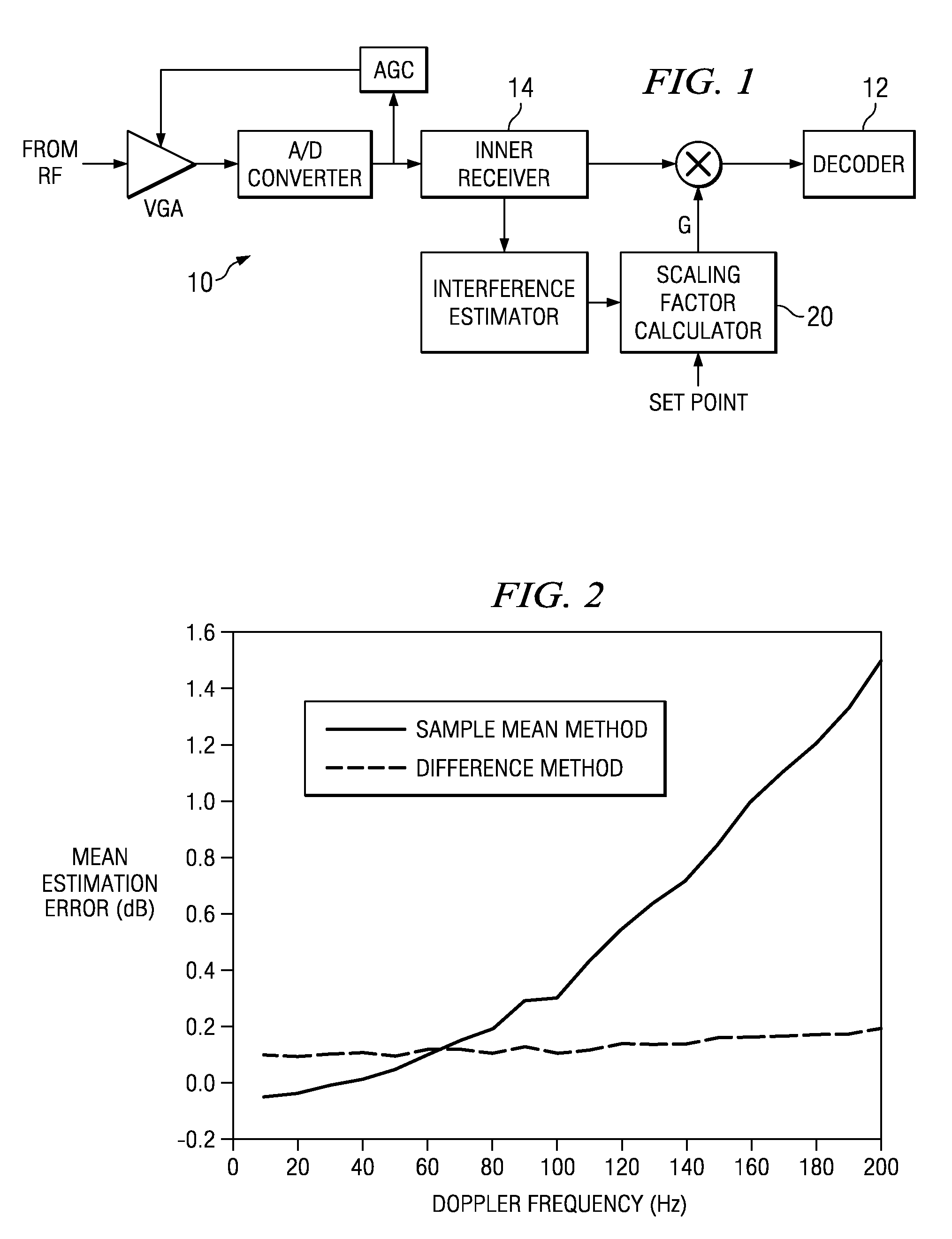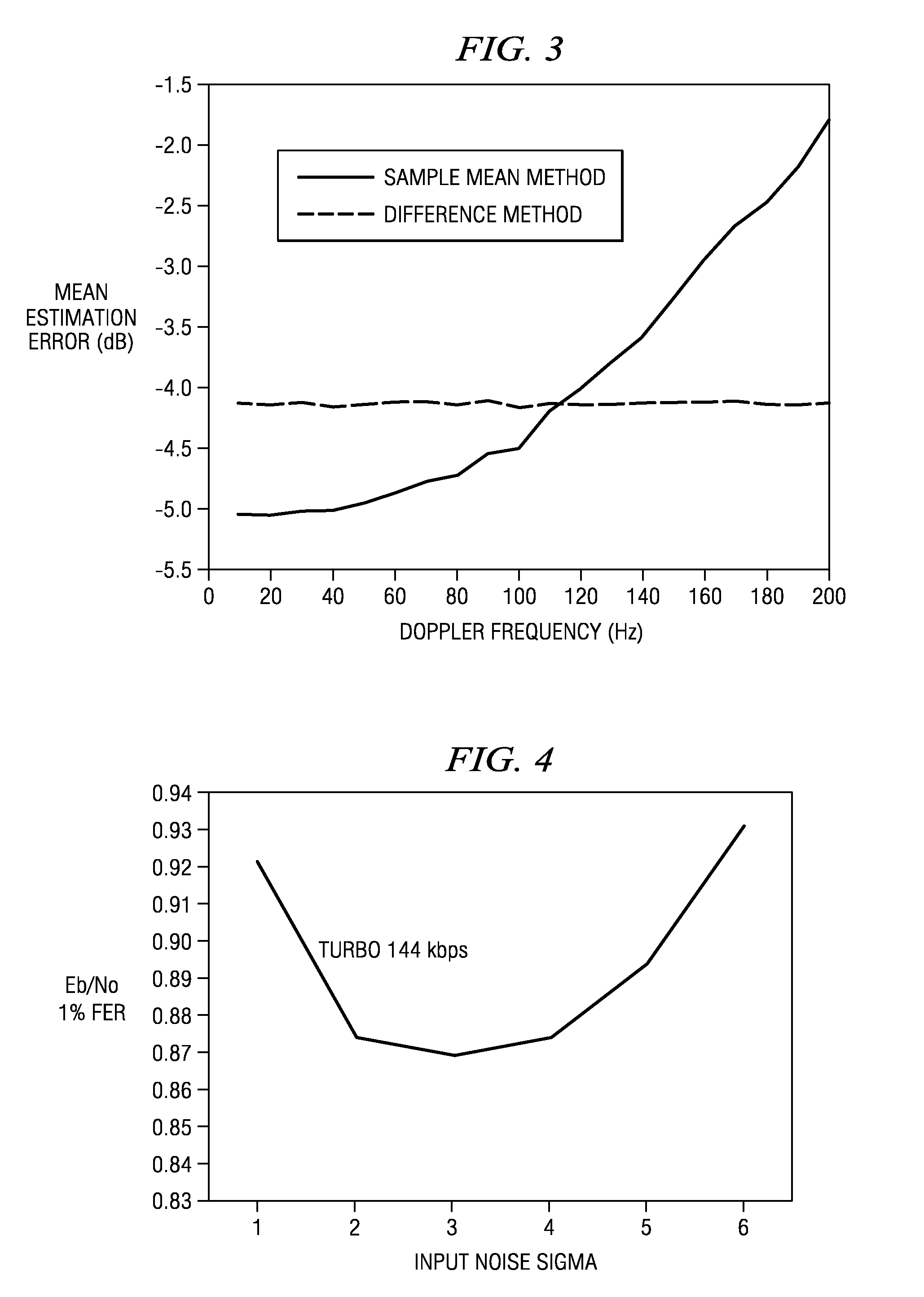Method and apparatus for decoder input scaling based on interference estimation in CDMA
a technology of interference estimation and input scaling, applied in the field of cdma systems and methods, can solve the problems of increasing the memory requirement of channel bit memory, requiring a large dynamic range of output of inner receivers, etc., and achieves the effects of saving frame buffer and gate count, optimizing decoder performance, and avoiding estimation bias problems
- Summary
- Abstract
- Description
- Claims
- Application Information
AI Technical Summary
Benefits of technology
Problems solved by technology
Method used
Image
Examples
Embodiment Construction
[0021]It is well known that most known techniques for scaling decoder inputs have tried to use a traditional gain control method. The mean square and / or the mean absolute values of the inner receiver output, for example, were used in some applications. One known application used a conservative scaling method where the largest quantization level is set to the maximum absolute value of the inner receiver output. This conservative scaling method specified 8-bits for the width of the decoder input memory. Similarly, most other solutions specified 8-bits for the decoder input memory in fading channels, which is much larger than AWGN requirements.
[0022]The detailed embodiments described herein below with reference to the figures, use the noise variance of the data channel instead of the mean square and / or the mean absolute values of the signal in order to scale the decoder input. The inner receiver output can be modelled by
y=√{square root over (Es)}d+n.
Here, d is a true symbol, y is an i...
PUM
 Login to View More
Login to View More Abstract
Description
Claims
Application Information
 Login to View More
Login to View More - R&D
- Intellectual Property
- Life Sciences
- Materials
- Tech Scout
- Unparalleled Data Quality
- Higher Quality Content
- 60% Fewer Hallucinations
Browse by: Latest US Patents, China's latest patents, Technical Efficacy Thesaurus, Application Domain, Technology Topic, Popular Technical Reports.
© 2025 PatSnap. All rights reserved.Legal|Privacy policy|Modern Slavery Act Transparency Statement|Sitemap|About US| Contact US: help@patsnap.com



